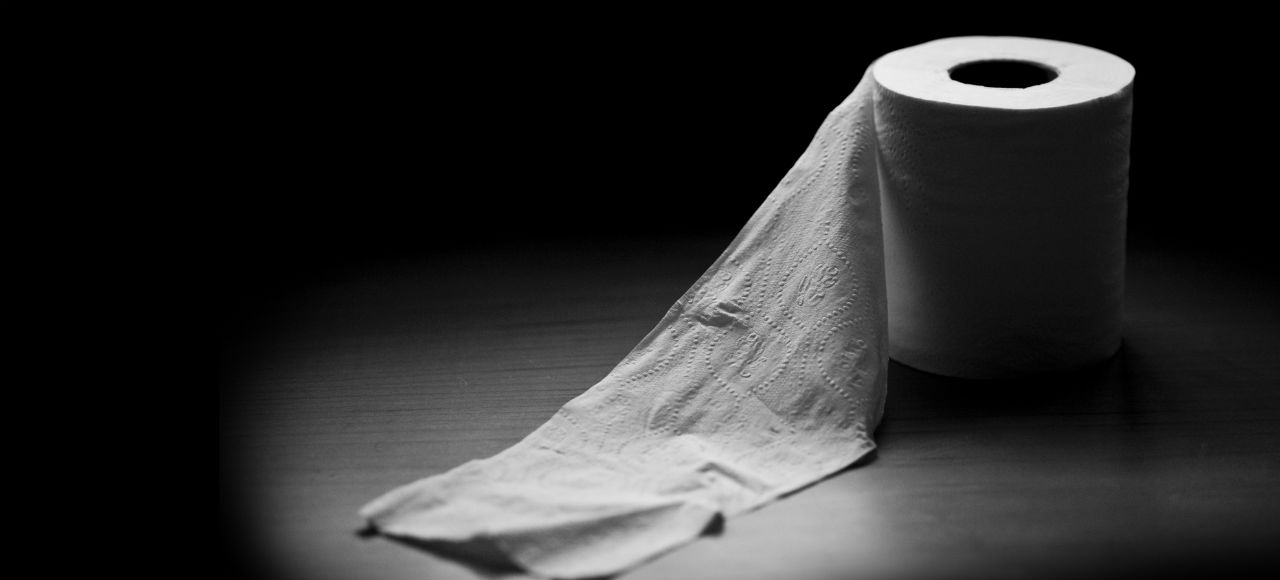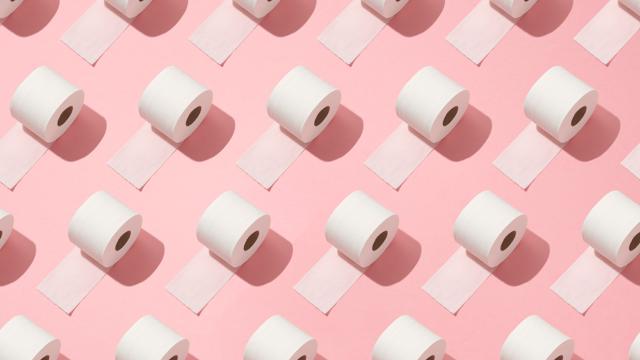What the hell is that? Seriously, did that just come out of you, or did it crawl up the pipe? If you’ve just exorcised a poo that looks nothing like what you’ve eaten recently, it could be a sign of a serious illness. It could also just be that curry from last night, so it’s good to know what to look for.
What goes into your dookie?
Human faeces goes by many names but is a universal byproduct of the human digestive tract. Yes even your girlfriend poos, even if you’ve never actually seen her do it. Stool is the body’s semi-solid waste product and is comprised of everything that the body could not absorb or otherwise had to expel, which is to say “crap”.
This includes not just food waste, but also more heinous sounding stuff like dead blood cells, bile and gastrointestinal bacteria, all covered in a mucus sheath that helps it slide out. Anytime you’ve strained and struggled to pass something that feels not only uncomfortable but actually impossible, you’ve experienced the discomfort of your body not producing enough mucus. It generally means you are dehydrated, so drink some water.
Divining your digestive system

When it comes to pooing, everybody is different. “There is no normal when it comes to frequency of bowel movements, only averages,” Bernard Aserkoff, MD, a doctor in the GI Unit at Massachusetts General Hospital in Boston, told WebMD. For some, going once or twice a day is normal, for others it may only be once or twice a week. This doesn’t automatically mean there’s something’s afoul in your gut. The same can be said in terms of your poo’s colour, size and shape.
Your stool, for example, can span a rainbow of brown, maroon and green tints, and still be considered within healthy bounds. Much of its colouring depends on the concentrations of bile in your system. Produced by the liver and excreted into the small intestines, bile contains cholesterol, bile salts to help digest fats, and waste products such as bilirubin. As the bile pigments are broken down by stomach enzymes, they tend to change from yellow-green to brown. However, certain colours may also indicate a serious intestinal conditions — and potentially even some forms of cancer:
- Green: Overtly green stool can be caused by a number of factors. It may indicate that food is passing through your system too quickly (read: fast-food induced diarrhoea), preventing the bile pigments from being sufficiently broken down. It could also be caused by consuming large amounts of leafy green vegetables, excessive amounts of artificial food colouring , or even liquorice candy produced with anise oil rather than actual liquorice herb. Some people have a sensitivity to Anise oil and may develop loose green stool after consuming it. Or, if you are on an iron supplement regimen (often used to treat Crohn’s disease and as a supplemental for ADHD treatments), bright green poos are a potential side effect, as are constipation and diarrhoea, so let your doctor know if any occur.
- White: Stool that is clay-coloured or white is caused by a lack of bile in your stool, potentially caused by a bile duct obstruction. If your biliary system is blocked — by, say a gallstone, enlarged lymph nodes in the porta hepatis, or inflammation and scarring of the bile ducts — bile will back up into the liver, causing not only white stool but abdominal pain, dark urine, and jaundice (yellowing of the skins and eyes) as well.
- Yellow: Yellow stool that is also consistently greasy and smells of sour eggs (due to the presence of hydrogen sulphide) may be caused by high levels of fat in the stool that have not been broken down by the bile. This is one symptom of Celiac disease, so if you see this floating in the toilet, definitely talk to your your doctor.
- Black: Black stool is a surprisingly common side effect and can be caused from anything from a night of binging on black liquorice and Guinness, to your iron supplement regimen, to ingesting large amounts of bismuth subsalicylate aka Pepto-Bismol. This happens when the bismuth subsalicylate combines with trace amounts of sulphur in your saliva to form bismuth sulphide, a highly insoluble black salt that can stain the tongue and stool jet black. Luckily, it is a temporary condition. However, black stool may also be an indicator of bleeding in the upper gastrointestinal tract, caused potentially by an ulcer or tumour. This bloody stool will often take on a tar-like appearance and smell horrible, so if you suddenly poo a poo that’s black and sticky and smells like something crawled up there to die but haven’t spent the last 16 hours at the pub, see your doctor.
- Bright Red: Another symptom that could be deadly or could be nothing is bright red stool. Red stool is fairly common, often instigated by natural and artificial food colourings found in beets, cranberries, tomato juice, red gelatine and drink mixes. But stool with bright red spotting or free floating bands of fresh blood are a sign of bleeding in the lower intestinal tract brought about by a case of haemorrhoids.
- Blue: If your poo is blue, there’s a good chance you’ll already know why. This is an extremely rare side effect of consuming ferric ferrocyanide — better known as Prussian blue, an insoluble bright blue pigment used in the treatment of heavy metal (radiation, caesium and thallium) poisoning. Blue poo can also be caused by guzzling large quantities of blue curaçao and grape soft drink.
- Silver: Silver poo is both very possible and a very bad indicator of your intestinal health. If your stool has the same colour as a tarnished candlestick, it could indicate that you are suffering from both a biliary system blockage and upper intestinal bleeding, Basically white stool caused by a lack of bile mixes with gastrointestinal blood, which stains it the same colour as aluminium spray paint. So if your poo looks like something the Tinman would pass, hustle yourself down the yellow brick road to the Wizard of ER.
- Purple: Congratulations, you have porphyria.
- Gold: You’re rich!
The texture of your poo could tell you a lot

It’s not just the colour that matters. Texture can say a lot too. And you don’t have to get in there and feel it to get the gist.
In the late 1990s, a team of researchers led by Dr. Ken Heaton at the University of Bristol began examining stool as a means of measuring colon health. Excess water is reabsorbed from stool as it passes through the large intestines (better known as the colon) before compacting at the rectum for easy passing. Normally it takes about 16 hours, on average, for digested material to pass through the length of the colon and be discharged. However, should the material pass through too quickly or too slowly, the resulting faecal matter can range in texture from soupy to hyper-compacted rabbit pellets.
The Bristol stool scale, as it is known, was first published in the Scandinavian Journal of Gastroenterology in 1997. And while some in the gastrointestinal research community have questioned the scale’s overall accuracy, the system remains in use as a means of ball-parking the effectiveness of various bowel disease treatments.
According to the chart, your seven types of stool are:

Type 1: Separate hard lumps that look like deer or rabbit poo. These are typically the most difficult to pass and are widely considered a sign of constipation.

Type 2: A unified, sausage-shaped log consisting of a mass of Type 1 poos all glomped together. Not as difficult to pass as a type 1, but still requiring a lot of straining, this also may indicate a slightly less severe bout of constipation

Type 3: This is actually what you want your poo to look like, albeit a bit on the dry side. Still so long as you aren’t blowing gaskets trying to push this out, this is a perfectly healthy poo.

Type 4: The Venus de Milo of craps, this is the “ideal” texture of poo. It should be sausage-shaped, with a smooth, velvety surface and encased in mucus. Lovely.

Type 5: This is a bit on the soft side, not quite diarrhoea but definitely not an ideal normal bowel movement. These soft blobs with clear-cut edges are passed easily.

Type 6: Also known as mudbutt, Type 6 stools are indicative of moderate diarrhoea. These fluffy pieces with ragged edges splatter out as a mushy pile of stool with no resemblance to the sausage-shaped stools we hope for.

Type 7: When Mount Poosuvius is getting ready to blow and you suddenly find yourself sprinting for the bathroom, get ready for a Type 7 stool — if you can even really call this oily brown splatter in your shorts “stool”.
So while you shouldn’t try to diagnose any medical condition based solely on the divinations of your poo and a guide you found on the Internet, keeping an eye on the colour, quantity, consistency, and quality of your crap can help alert you to subtle changes in your health while acting as a barometer for your overall butt health.
This article has been updated since it was first published.
